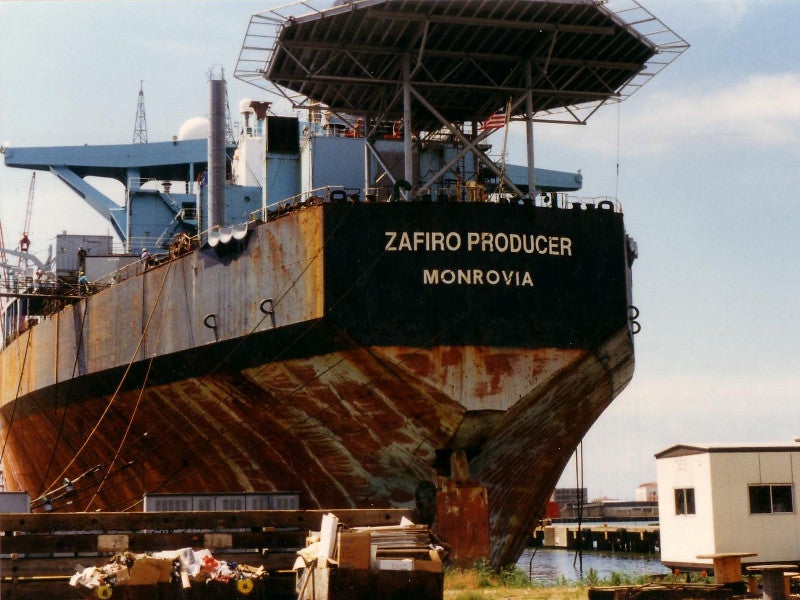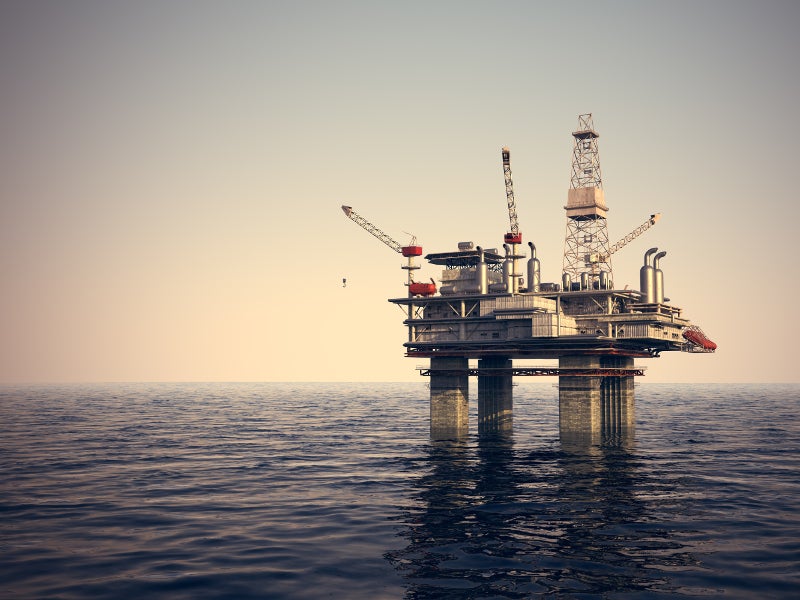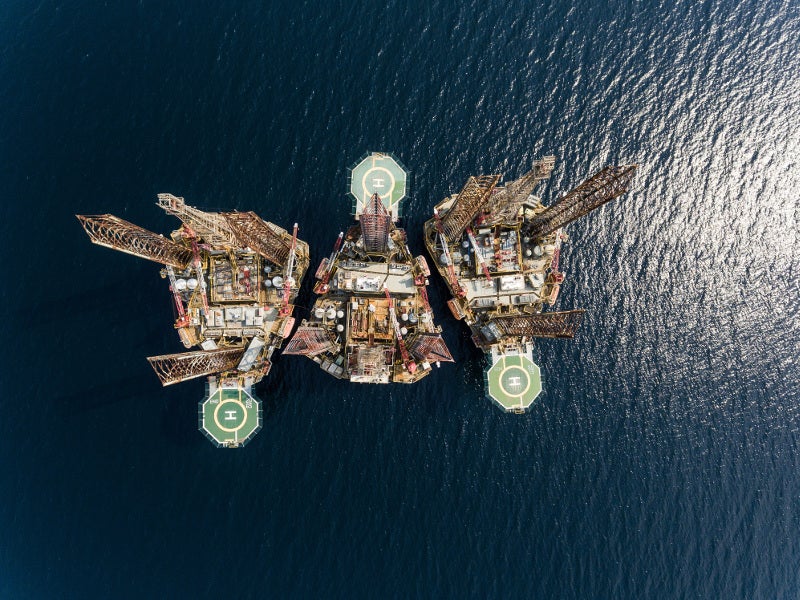The Zafiro oil field is located in the Gulf of Guinea, off the coast of Malabo, Bioko Island, Equatorial Guinea.
Producing since 1996, the offshore field is operated by Mobil Equatorial Guinea (MEGI), a subsidiary of ExxonMobil.
ExxonMobil holds 71.25% interest in the field, while state-owned Guinea Equatorial de Petróleos (GEPetrol) and Government of Equatorial Guinea have 23.75% and 5% participating interests, respectively.
Location
Zafiro oil field is situated in the Block B offshore development area that is spread over 500,000 acres in the Gulf of Guinea. It is located close to Equatorial Guinea’s international maritime border with Nigeria.
The water depth of the Zafiro field ranges between 400ft and 2,800ft.
Zafiro oil field discovery and ownership history
United Meridian Corporation (UMC), a company based in the US, was awarded the exploration license for Block B in 1992. Mobil, an oil exploration and production company that originally held a 65% interest in Block B, discovered the Zafiro oil field by drilling the Zafiro-1 wildcat well in 1995.
The Zafiro oil field came on-stream in August 1996.
Mobil was merged with Exxon in a multi-billion dollar deal to become ExxonMobil in 1999.
UMC’s stake in Block B changed hands multiple times. Ocean Energy acquired UMC in March 1998 and was further merged with Devon Energy Corporation in 2003.
State-owned Guinea Equatorial de Petróleos (GEPetrol) bought Deven Energy’s 23.75% stake in the Zafiro oil field in 2008.
Zafiro field production and processing infrastructure
The Zafiro oil field is developed with a total of 117 wells, including 92 producer wells, 24 water injector wells and one gas injector well.
The production and processing infrastructure at the field include a floating production unit (FPU) named Zafiro Producer, a fixed production and drilling platform named Jade, and a floating production storage and offloading (FPSO) unit named Serpentina.
MT Swift, a very large crude carrier (VLCC), was converted into the Zafiro Producer FPSO unit, which was commissioned at the Zafiro field in August 1996.
As part of phase two FPSO upgrade, the Zafiro Producer underwent modifications between1997 and 1999 in order to increase the field’s output from 40,000 barrels per day (bpd) to 80,000bpd.
The Jade fixed production and drilling platform, with 60,000bpd production capacity, was installed at the field in December 1999.
The Zafiro Producer FPSO was converted into a floating production unit (FPU) in 2000, while the FPU, as well as the Jade platform, started pumping crude oil to the MT Magnolia floating, storage and offloading (FSO) vessel located adjacent to Zafiro Producer vessel.
The Serpentina FPSO was put into service in the southern expansion area of the Zafiro field in 2003. Amazon Eagle, a VLCC built-in 1974, was converted into the Serpentina FPSO.
The MT Magnolia FPSO was scrapped in 2007. The production from the Zafiro Producer and Jade platform is being routed through the Serpentina FPSO for storage and offloading.
Zafiro field oil reserves
The Zafiro field operation is based on hydrocarbons resources from the Zafiro, Jade, Opalo, Sausage, and Serpentina reservoirs.
The total recoverable reserves of the offshore field are estimated to be 1.19 billion barrels of oil.
Production at the Zafiro field
The cumulative oil production from the Zafiro offshore field exceeded one billion barrels in 2014. The production, however, has been declining steadily.
The field produced 90,000bpd of oil as of January 2020, compared to 280,000bpd in 2004.
ExxonMobil’s disinvestment plans for Equatorial Guinea oil assets
ExxonMobil was reportedly in talks with companies from Russia, UK, and Equatorial Guinea to sell its Equatorial Guinea oil assets including the Zafiro field by June 2020.
Contractors involved
Oceaneering was the project manager for the conversion of the MT Swift VLCC into the Zafiro Producer FPSO. The major conversion works were carried out at Galveston in Texas, US.
Oceaneering also performed the modifications on the Zafiro FPSO between 1997 and 1999.
SBM Offshore leased the Serpentina FPSO to ExxonMobil in 2003. The FPSO was later bought by ExxonMobil. The vessel is currently being operated by GEPsing, a joint-venture between SBM Offshore and Equatorial Guinea national oil company GEPetrol.
Keppel Shipyard, the marine division of Singapore-based Keppel Offshore and Marine, converted the Amazon Eagle VLCC into the Serpentina FPSO in 2002.
Royal Boskalis Westminster, a Dutch dredging and heavy-lift company, performed partial mooring replacement works for the Zafiro FPU in 2015.





